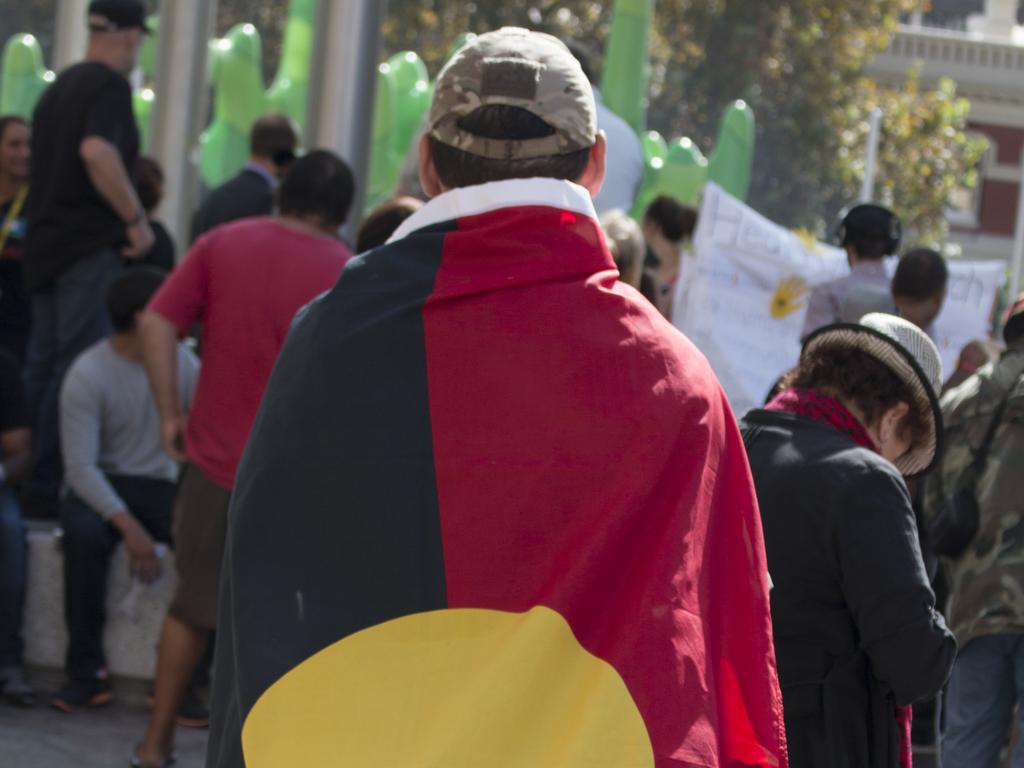The creative story behind ‘box tickers’
She introduced herself to me as a fellow “Koo-ree”, having secured her student spot through the Aboriginal entry program. We call them box tickers because they “tick the box” at census time.

She introduced herself to me as a fellow “Koo-ree” shortly after I started my arts degree at university, having secured her student spot through the Aboriginal entry program. When I asked who her mob was, in the way that we do as Wiradjuri, she arranged her brows in a sad expression, sighed, and said “we don’t know because we suspect my mother’s birth certificate was tampered with”.
This conversation took place in the early 1990s. Since then, I have heard equally spurious claims from people seeking to legitimise their claim to identify as Aboriginal. We call them box tickers because they “tick the box” at census time.
They have often been referred to as “johnny-come-latelies” or “born-again blacks”, but my analysis of such claims indicates that box tickers latch on to these terms because they imply a sense of belonging that they believe they are entitled to.
My research in health communication examines the performative element of box ticking.
A box ticker relies on a type of mythologised persona, developed through key communicative devices. For example, box tickers are commonly on “a journey of discovery” to find themselves or their belonging. This “journey” device feeds into audience fascination for mystery, where the box ticker is the star of their own Dan Brown novel. The popular television series Who Do You Think You Are draws on this “everyman sleuth” technique.
Box tickers try adopting well-known Aboriginal English words or phrases – such as “deadly” – but there is something “off” or discordant to our ears; the word or phrase is used or pronounced awkwardly.
A common example is mispronouncing the word Koori, a word Aboriginal people in NSW use to describe ourselves. These speech acts are jarring and mark the speaker as a stranger.
Remarkably, the box tickers carry on blissfully unaware of their clangers, secure in their belief that we cannot distinguish verbal and tonal signals that we have heard and spoken all our lives.
Add costuming to these performative elements in the form of a long, bushy beard, a bandana, or a conspicuous tattoo of the Aboriginal flag, and the conversion is all but complete. All that remains is recognition from the non-Aboriginal world, and repeated refining of the performance.
This is not to say that Aboriginal people do not have journey stories or grow beards. But these mythologised figurations play on stereotypes and assumptions. Incorporated into health research data, this distorts how Aboriginal people are understood and impact on how resources are allocated.

Box tickers are in our spaces and our lives. They have begun to embed themselves in ways Aboriginal people find it difficult to remove them.
Wiradjuri have been dealing with this growing movement of people self-indigenising for decades.
In 2016, a case brought by two Wiradjuri people against a female box ticker who had managed to get membership of a Local Aboriginal Land Council finally ended when she was struck off by the NSW registrar. It took nine years.
Many box tickers present in the health and help industries – nursing and social work – but they are also strongly attracted to the arts and academia.
But while many Aboriginal people, and some experienced researchers in the anthropology, archaeology or history disciplines, can see and hear through these presentations in ways that a politician or media personality rarely can, calling it out is fraught with risks.
Box tickers have become adept at using defence strategies such as “lateral violence” – a concept that colonised people have internalised oppressive colonialist behaviours and turn on each other rather than the colonisers – to silence Aboriginal people who question them.
Well known Aboriginal Australian anthropologist Marcia Langton said: “Australians do not know and relate to Aboriginal people. They relate to stories told by former colonists.”
Box ticking is doing us harm. The Aboriginal person in life fails in every way to measure up to the idealised version of health when the ideal is an abstracted figuration. But of significant concern in the health context that I am looking at is how this masks Aboriginal health conditions and influences policymaking decisions.
The Australian Census 2011 to 2016 statistics show population increases – allowing for birthrate and the fact migration is not relevant – concentrated in southeastern Australia: well over 20 per cent. But where these can reflect stark numbers for self-identifying, it is only one part of the problem: how are these performed identities being legitimised and who is recognising them on our behalf?
It seems every second Australian knows a white person who has converted. Even those who feel uncomfortable are roped in to supporting this movement. So how do we as mob bring the rest of Australia into this conversation, to address this situation with us?
As for what happened to our birth certificate victim, she finished university as an Indigenous student, gaining her masters then doctorate. She is now an academic and consultant on Indigenous leadership.
Suzanne Ingram is a Wiradjuri researcher and teaching fellow at the department of anthropology, University of Sydney, where she is completing her PhD. She is a board member of the NSW Aboriginal Housing Office.


To join the conversation, please log in. Don't have an account? Register
Join the conversation, you are commenting as Logout